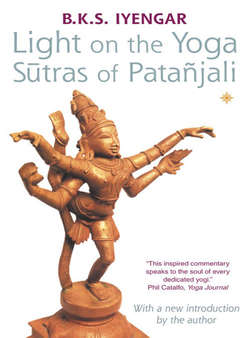Читать книгу Light on the Yoga Sutras of Patanjali - Литагент HarperCollins USD - Страница 19
Effects of practice and renunciation
ОглавлениеIntensity of practice and renunciation transforms the uncultured, scattered consciousness, citta, into a cultured consciousness, able to focus on the four states of awareness. The seeker develops philosophical curiosity, begins to analyse with sensitivity, and learns to grasp the ideas and purposes of material objects in the right perspective (vitarka). Then he meditates on them to know and understand fully the subtle aspects of matter (vicara). Thereafter he moves on to experience spiritual elation or the pure bliss (ananda) of meditation, and finally sights the Self. These four types of awareness are collectively termed samprajñata samadhi or samprajñata samapatti. Samapatti is thought transformation or contemplation, the act of coming face to face with oneself.
From these four states of awareness, the seeker moves to a new state, an alert but passive state of quietness known as manolaya. Patañjali cautions the sadhaka not to be caught in this state, which is a crossroads on the spiritual path, but to intensify his sadhana to experience a still higher state known as nirbija samadhi or dharma megha samadhi. The sadhaka may not know which road to follow beyond manolaya, and could be stuck there forever, in a spiritual desert. In this quiet state of void, the hidden tendencies remain inactive but latent. They surface and become active the moment the alert passive state disappears. This state should therefore not be mistaken for the highest goal in yoga.
This resting state is a great achievement in the path of evolution, but it remains a state of suspension in the spiritual field. One loses body consciousness and is undisturbed by nature, which signifies conquest of matter. If the seeker is prudent, he realizes that this is not the aim and end, but only the beginning of success in yoga. Accordingly, he further intensifies his effort (upaya pratyaya) with faith and vigour, and uses his previous experience as a guide to proceed from the state of void or loneliness, towards the non-valid state of aloneness or fullness, where freedom is absolute.
Table 1: Levels of sadhaka, levels of sadhana and stages of evolution
If the sadhaka’s intensity of practice is great, the goal is closer. If he slackens his efforts, the goal recedes in proportion to his lack of willpower and intensity.
